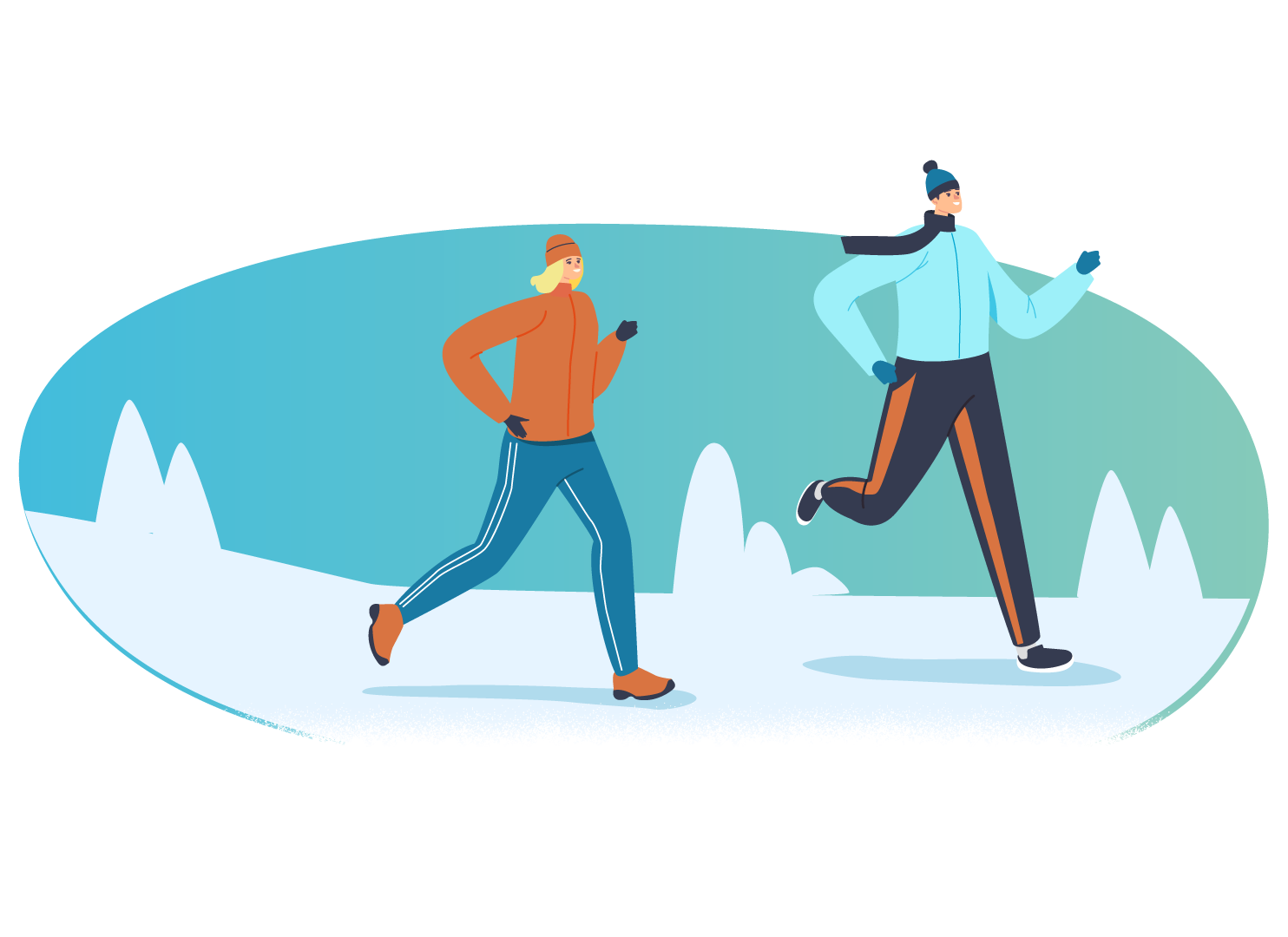
Leafless trees, piercing cold, heavier clothes, darker tones, shorter days, longer nights, there is a pending stillness all around us. However, as plants and animals withdraw, we do everything we can to escape the fact that we are also animals.
Our circadian rhythm – the internal body clock – is strongly affected by light, so as days go darker and shorter, our body decreases its rhythm and focus on preserving the energy available. Still, with an increasing amount of people living in cities and spending most of their time indoors, our current lifestyles do not respect or adapt to this. That can lead to an imbalance between our energy levels and the demands of daily life. Consequently, if we don’t consider our environmental factors, we may feel discouraged and feel that we are failing, when our body is just simply reacting to our surrounding environment.
How can we, then, find a balance between this natural tendency of the body and the fact that most of us do not wish (or are not able to) hibernate? When we understand the connection between this slow-down process and the natural cycles that occur, we can then plan our days more effectively.
Prioritising getting sunlight during the day will help our circadian rhythm, allowing us to sleep better and feel more energized. Scientists have long understood the importance of getting enough sleep, the key part played by light exposure can sometimes be overlooked. Suddenly the decision between sitting inside or on the terrace gains new relevance. Sunlight also supports the production of serotonin, which is partially responsible for a typical craving for more caloric food. As we may spend more time indoors, we may try to use the time to focus and experiment with seasonal foods (like citrus or leafy greens) which tend to have exactly what our body needs in each season. Local producers’ markets are a great way to create a better and closer relationship with the food we eat, to meet new people and they can also be the perfect excuse to get that Saturday morning sunlight. (Or noon, that’s ok too.) As the weather changes, the temperature goes down and the daylight may be long gone when we get home, it may be difficult to keep up with our physical activity routine. However, that does not mean we’ll have to put it aside, we can adapt. That may start by establishing realistic goals for this season. What is your goal around physical activity? How does it relate to what is happening within and around you? How can it be adapted and transformed to align with the season?

5 Tips To Stay Active This Winter
1. Plan ahead
Check the weather forecast and choose appropriate clothing. Have the clothes and everything else prepared the night before or you can even sleep in workout clothes to avoid that excuse. If you exercise after work, try to create the habit of changing to workout clothes as soon as you get home; as they tend to be more comfortable that won’t be such an effort and then you’re already halfway there!
2. Partner up
Having a partner may help you be more committed to the practice and increase your motivation to face adverse conditions. If you don’t know anyone interested in joining, choosing group classes or team sports may do the trick.
3. Indoor alternatives
If the weather doesn’t give you a break, there are several indoor alternatives you can try. No wonder gym registrations increase during Winter. And if needed, group classes may give you some extra motivation to get there. Swimming may be a funny and accessible alternative, even if you’re feeling a bit rusty. But several other physical activities happen indoors: volleyball, basketball, hockey, dance, martial arts… You can use these colder months to try a new hobby! Plus it’s a great way to meet new people.
4. Work out from home
If going out feels like too much right now, you may try to bring that same spirit indoors, either by yourself or using the internet to find routines to follow. You can even invite and include the people you live with and make this a playful and bonding moment.
5. Focus on the benefits for your wellbeing & level your demands
Exercise is usually a great help in dealing with stress, regulating sleep, improving self-esteem, and boosting our mood. So even if you’re not able to do it for long, those small steps are already quite important. Remember to recognize that. Make it a goal to go to the gym or to start your activity routine, knowing that it is ok to leave it after a bit if you want to. However, once we get the body moving, it’s easier to convince it to keep going.
Winter is a season of withdrawing. The long nights and the coldness just outside the covers make it difficult to get the body moving. But in between what our body is stating and our expectations of maintaining a sometimes hard conquered routine, it is possible to find a balance that takes into consideration these fascinating efficiency processes that our body (and the world around us) is carrying and also the need to get that mood boost to keep us going. Self-care is this permanent balance between indulgence and discipline. Winter is a season of contemplation: all around us transformation is happening in the depths of the tree trunks, of the earth, and ourselves, if we allow it. Being mindful of these processes may allow us to experiment with using a compassionate approach to our shortcomings. So yes, let’s make It a point of continuing physically active during winter, but when we do not succeed, let’s also make a point of being emotionally pro-active in forgiving that. We’ll do better next time.

